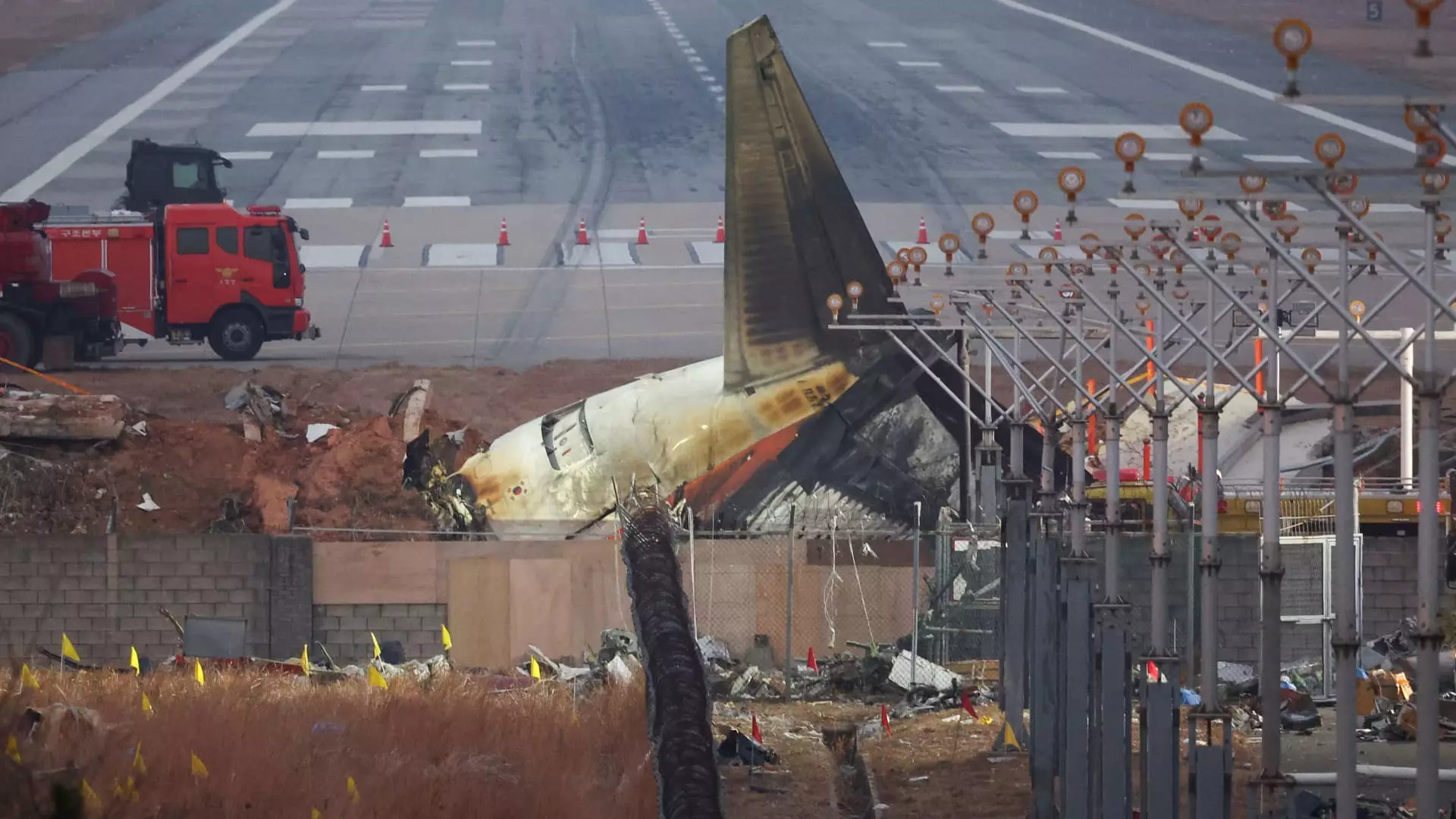The aviation industry was shaken on a recent Sunday when a tragic crash involving a Jeju Air flight claimed 179 lives, with only two crew members surviving. The aircraft, a Boeing 737-800, met a catastrophic fate at Muan International Airport in South Korea, as it landed without proper gear and collided with a wall, erupting in flames. This incident has raised serious concerns about the safety of the Boeing 737-800 model and the regulatory practices governing South Korea’s airline industry. Following the disaster, an official investigation has been launched, leading to a rapid reassessment of the aircraft model operated by domestic airlines.
In the wake of the tragedy, Boeing shares experienced a significant decline, falling more than 2% on Monday. The drop in stock value serves as an indicator of investor sentiment and public perception regarding the safety of Boeing aircraft. South Korean authorities responded promptly, with Acting President Choi Sang-mok demanding an emergency safety inspection of the entire airline operation system within the country. The Ministry of Land, Infrastructure, and Transport (MOLIT) announced its intention to conduct a “comprehensive special inspection” of all Boeing 737-800 airplanes operated by domestic carriers. Investors and aviation enthusiasts alike are keenly aware that public trust and aircraft safety are paramount for Boeing’s future performance.
As investigations unfold, the events leading up to the crash are increasingly scrutinized. Initial reports reveal that the pilot alerted the control tower regarding a possible “bird strike” shortly after being warned about bird activity in the vicinity. Shortly thereafter, the pilot declared a “go-around,” indicating an aborted landing attempt, followed by a distress “Mayday” call. The recovery of the aircraft’s black boxes promises to provide vital data about the sequence of events that led to this tragedy. A specialized team from the U.S. National Transportation Safety Board, in collaboration with the Federal Aviation Administration and Boeing, is actively supporting South Korea’s Aviation and Railway Accident Investigation Board in their inquiries.
While analyzing the crash site, investigators are taking a close look at the concrete wall that the aircraft impacted, seeking connections that may elucidate factors contributing to the accident. The involvement of CFM International, the engine manufacturer for the 737-800, ensures that the investigation will be thorough. Despite the situation’s gravity, aviation experts assert that it is indeed unlikely that a design flaw in the Boeing 737-800 caused the tragic crash.
The Boeing 737-800 has frequently been regarded as a workhorse in commercial aviation, boasting a solid safety record throughout its nearly three-decade tenure in service. With approximately 4,400 of these aircraft still in use, the model constitutes about 17% of the world’s operational jet fleet, a testament to its reliability and efficiency. South Korean low-cost carriers, especially Jeju Air, have relied heavily on this aircraft for their operations, evident by Jeju Air operating 39 of the model in their fleet.
As inspections commence, Ju Jong-wan, the director of the Aviation Policy Office at MOLIT, indicated that compliance with operational regulations will be under the microscope. Specific attention will be given to maintenance and inspection records related to the Jeju Air fleet, particularly any anomalies that may provide insight into the malfunctioning landing gear. This investigative approach aims to ensure that all operational protocols are adhered to strictly, thereby restoring public trust in the safety of air travel.
In the wake of this tragedy, both Boeing and Jeju Air will need to engage in deep introspection regarding their safety management practices. The financial implications have already been felt, with Jeju Air shares plunging to an all-time low on Monday. A $1 billion insurance policy for the aircraft, as confirmed by Jeju Air management, might offer some relief, but it certainly does not replace the lives lost or the grief suffered by the victims’ families.
As physical and procedural investigations continue, stakeholders in the aviation industry will be watching closely. The Jeju Air crash serves as a sobering reminder of the potential dangers inherent in air travel. Ensuring safety standards, improving regulations surrounding environmental notifications, and bolstering maintenance practices will be imperative moving forward to prevent such calamities from occurring in the future.

